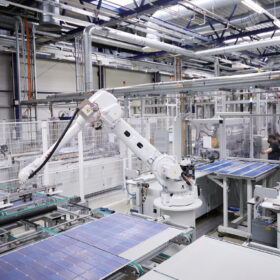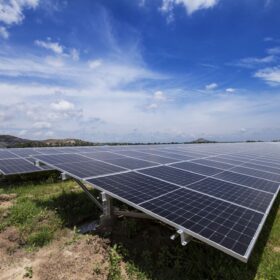Tata Power inaugurates green energy skilling centre in Delhi
Tata Power’s Green Energy Skill Centre will impart training in renewable energy technologies, including solar PV system installation, commissioning and operation and maintenance, energy storage, pumped hydro storage, and electrical safety to prepare future-ready green energy workforce for the country’s energy transition.
How renewable energy is reshaping India’s job market
The renewable sector has gradually become a hotbed for innovation, investment, and intellectual capital. The transformation is well underway, and while it may not be loud, it is deeply consequential. As India powers its future through the sun, wind, and water, it is also building a workforce ready to meet that future
Meyer Burger lays off 283 solar production workers in Arizona
The Swiss company began manufacturing heterojunction modules in the United States nearly one year ago, but ran into trouble less than six months later after a large purchase agreement was terminated.
Are robots coming for solar installer jobs?
Robots on solar sites are not new; they have been deployed to automate everything from operations and maintenance to inspection and cleaning. In recent months, there has been an uptick in interest in robots for installation, particularly among utility-scale solar developers dealing with staff shortages, safety concerns, rising costs, and pressure to build.
Renewable energy hiring to surge around 18% in FY25 as demand for skilled professionals rises, finds Teamlease Services
The demand for specialized skills continues to rise, with an emphasis on engineering, project management, data analytics, and sustainable energy solutions. Job roles such as solar panel installers, energy auditors, and operational support professionals are in demand.
India’s green transition: Key workforce trends in renewable energy
The demand for renewable energy project managers, battery storage specialists, and wind energy technicians is set to grow significantly in 2025. Additionally, positions in solar plant operations, maintenance, and technical roles will remain highly sought after.
IRENA calls for greater gender inclusion in decentralized energy sector
The International Renewable Energy Agency’s (IRENA) latest report says that women’s roles in decentralized renewable energy are critical to achieving universal electricity access in underserved communities.
Skilling 100,000 ‘green energy warriors’ to drive India’s solar revolution
India’s journey in solar energy is nothing short of remarkable. Currently ranked fifth globally in solar power capacity, the nation has witnessed an exponential increase in installed capacity—from 21.65 GW in 2018 to an impressive 90.76 GW in 2023. Government initiatives are playing a crucial role in accelerating solar capacity expansion. The Solar Park Scheme, […]
India’s renewable energy sector faces leadership talent crisis, says WalkWater Talent study
A recent report by WalkWater Talent Advisors underscores a significant talent shortage in specialized roles such as project management, business development, and regulatory affairs within India’s renewable energy sector.
BluPine Energy completes utility-scale renewable energy technician training program in Gujarat
The state-of-the-art skill development centres established by BluPine Energy trained students in the installation and operation of utility-scale renewable energy projects free of cost.















